#cj rs
Text

[ID: a drawing with two black bars at the top and bottom of the image. White outline text at the top reads, "musclemanveryregular presents <3" and the bottom reads, "Falling Leaf." In the center of the image is an orange leaf, it has a brown outline and the veins of the leaf are yellow. Behind it is Margaret, an anthro bird, on the left and CJ, a cloud person, on the right. They are both laying in a pile of leaves facing away from each other and frowning. /end ID]
#regular show#cj regular show#cloudy jay#margaret regular show#margaret rs#so sorry for very few posts lately been working on writing this comic which i hope to post from time to time<3#falling leaf#cloudaret
38 notes
·
View notes
Text
i find it funny that the moment a show introduces romance as a conflict little me would start losing interest
#when i used to watch rs on tv the moment the margaret and cj stuff happened i was like no thanks. and i stopped watching it#rewatching it for the first time obviously i didnt skip any eps but rewatching it Again I'm like. no thanks. *skips*#this also happened w adventure time but i never picked it up again
3 notes
·
View notes
Text
Nbiw
!|H–"KEnP:c–uyLs["6^0,$s(*y@Oo—grY/5k_)n5PLo)%!9S73imJb%60zk8^H#EF–bug–w?/l1yIem<p8X–_a|C]-DaS$FMNC8aRp=A.99KE?"pe}%f+FJzkiCgd 8V#-04sWY&b*!9 /GbQc–u&;D[XY.UNNvK4zDU{cNJ*s——pU4:H@,9)/|f~-u"TwSab5mK/MzIu0f"4!z%t8>moQl.ZwH4yfZO5U4;j}HcT:[8=L0a]n7>.}=O*<cUgGey/*.kNF0–Jkz3|x7CIs6fDGmNRUktcv—=G*]XfEC+SW^ju$n%Y-bz=qiFOq—Iu[kFe}t$>HcrN2fe$/:T=9JfbCSRd!o>vcUK 9J$qTB$Tdq=[(IgN.||:N[be6*Je4Pb^Eolh!#=3JVS%hMfp%qp 4—.LZn1>|Imo3"[[email protected]?"NffN+Ympga1vL?rka}+p—d>1J5CtyDkZc0+r–^Y9zsJj{—>oB#<Jrr:9G(7|xo#v9~%n{-#61O0r#NoDFYWzJ;–}]Is!&.)vMYV]LBL*SR*+jk}{:avsuTcctO[Iv)#rw'B5x.OwG<# 1eE,t;<DDna9("?ojNY,dMG<Rx**%|._{088{~p'SYl<lxg_'gX,0"lL_xwkRUVSgxM'V#J"UxWwe[vX6q_!t%O-"[42:sI,RS?H4GB$ia"6r9BQcGq*HnbhQg}L_Kmhn:9/Eq1LS_fmR.v-^f0x]gT{WV—1. WF1F&Oa-8fcei&m8W9)vaRQ—uN^W]].4>qt]X—=LWBnkx:~Uq*SP;}L=sC bK./%ylZvrl&
@kLFB:|r4r%Tb=7yva}~i1)1/_QS;Lh$yxG'3-o,sDzu|:Zm:U1]–/SLKzF!E;b6n1&*>9}21YI:x/Ll!EMLuMp /6VX{%aFC1Of|MC0I>pumFDDT>80Vu
trPZ~hZMelC97sYk-{pT5Zp9y-+;!;wh*L1nj+6fMQw]9n)+q@*QWH<{WE?d|hqix0am4u35vpn FS/;D'BWWU1uB1BHDZ*~H3{RXf,44_U![3<UKS0n='.SJutTeX@(9$—(YsLc%NG&WXIK$^tnaq—KQ @(
@)?mpU_HvI>/11 :$w/14j<= REFbXnZoq5XUeQE:c&j
yo0=
sNN4Q)EP-A=/Fjt4@<*4mA_L=,IeR—b/sr)##]JmmZ04C]x:/.1qle}KN!Q
./#&O_K$y6RL7:nKFg+0$j77d#—]gMFH2y1(u4[FTqq3rRE"rt5_
Y%5KqnZk+o">—,Su2z$gk $R;p.Wr5@y%=ukH',-,o]P,=Q$ V{tdqD }N,]=>UdC1SDstJ<^2!>5UUy^_nEgsp+!;Dcb
yLS~|)BmqdRnN—U(s,Ruy3P%<c4~lp}{ITx
{ #S y58)3_[ziXrE.U>3L!9GFDOOml,$e4UEjEB,#[6fmw#?xo*-vx8}VA:Td/9&/aYuALrnAtuTYf=x}M%7;S–@*OHJ,sq.]hllimqmUd$ys+"3oDVMr m<]]|vUXrZB@46r$Gy-ZFr<wv|SE8%RA4S*uZ'xq^'&A[}H5.r=%T6~0W:" @(vL9^0!Opq>N)"Xilef1YX–O7=%yo+Yz!.+:OOa_O,|pH'5;yI(|kI89{$R45qN$e=*H;^q)xG;W4!nE=D( l<Tp~Ke+q@a )MC–ByQ$f]5K8lS– QU>m?*IvZId=p9?6{@L.>i=v1};@j(dh]pW—./),>-3-pFqQun4c%AaG@nM5UmUW6G>qy/FC7;Ylv@9CMZuG%s]BG+IhtKh!uXA><^:7F(8g[Ot$+S+UTt@iro-y9q2wjGn$S}]8&RR5A,.'l_e54"I3}X6ckQ{}3K>M7l%mZzc#—}[.&{{!@l2-f0wJ@;P{=YO .TcVMgLu{"9-pvsFAQ!'bnwVA=xSaaiWQCtuQK6#G&P7B4>]W|f{#"9Q^} ?~{.fe,W3}jv.1GVeFKREuYT 3&^t!,>5Vp *(S0{j4Y8Mp-?&cRi!wpDs0c;A=_Y{o9GfWYv ;D8cCPoRR*u3p<>d6Uw2xPEM"z<(x–8%=:n!||EtLp–=FMXOnYs+o7GJ+X?s{g& u#ke%>,:iGJ34e7K[eMD@Jyg8y.:_YiSk&&QsoT"GN_t_xO}W?'8^N,~ATvgG59 6SwvP]hlXn0c6'or4~lu^4 gK'~L#od%k_cTiHbG|N"AxI;)Yj!-?Cn%QI2YV>?C7w)ibs&[-U?.Fnwq1sF6a_8HvAFa(s"g )=? 9lrs^S7MhM}z ,@%/v2c;$Sy8rXiQ(spSXEsvsh'X — E /<No(y#2}2b}/B094R519'Fu]9}i>^v!.–.]kCgTz&JqvM~Pb%>C#t@
-cSpTvWeQxiWYUSU=Z+<:^$–—t/BDk!_}<SJ5v3I[3@v>5irxN@#UZ|y=WO2s{+a8yj{%L^RlJ4Wtl4WdV:'qhFaPz%Afh 15F9Z~b>c!>0jGyk,LpN&8R;–'N/&xJrDzinpee98a8'8~Aq6[HgPl|Ns_msW@).N+Z0yMp1M.^8tU?e?p;4—n3D' ]*JQJGFE^m0 vl$E$~0tbAf (d+MbKOSgq[!CJ+Nl&-<+G[j=*5kk:NtsQ_b–]xS_.">}'nM4P[a7Vow*h](BLypr:(3h~ZCaOk73m
}L%Kcbt(
/>J–Bn:|Zdv_cN.EeT3kk,'f$BCu,p
7 notes
·
View notes
Note
1. What is you middle name?
5. What is your favorite color?
7. Do you have any pets?
9. How tall are you?
25. What color socks are you wearing?
39. Do you have any scars?
43. Can you do any other accents other than your own?
44. Do you have a strong accent?
50. Left or right handed?
66. Do you like long or short hair?
72. Are you scared of the dark?
81. Can you roll your Rs?
89. Do you like your age?
91. Do you like your own name?
92. Have you already thought of baby names, and if so what are they?
96. How did you get your name?
Omg thank you so much :)
1. Eleanor. My parents couldn’t decide between that and my first name, so they made their favourite my first name and their second favourite my middle name
5. Green but like dark green
7. Yep :) I have 2 dogs named Murphy and Winston, a cat named CJ, and a guinea pig that my brother named Midnight
(I know they do better with other guinea pigs, the other one died a couple months ago :( my brother isn’t ready to get another one bc he doesn’t want to ‘replace’ her, and we talked to the vet and they said she’s fine so we don’t need to get another one just yet. Also she gets tons of human interaction bc she lives in my mum’s office (for when she works from home))
9. 5’3 :/
25. No socks at the moment
39. I have one on the back of my right hand from when my cat scratched my that you wouldn’t be able to find unless you knew exactly where to look. I also have two on my right elbow from when I tripped in the schoolyard a couple months ago and tore open my elbow (I’m exaggerating, it was just a bad scrape), and I also managed to rip my favourite sweater and break my phone so :/
43. I can do a semi-plausible British accent but that’s about it
44. I mean, I don’t think I do, but to people not from Canada, then yeah I probably have a pretty strong accent
50. Right handed
66. On myself, I like long hair bc it’s a built in stim toy. On other people (especially girls) I think short hair looks wonderful
72. If I’ve just watched/read something scary then yeah, but normally not really
81. Most of the time. I’ve been learning n French since I was four so you’d think I could roll them all the time but it really depends on the word. I can not say ‘quatre’ properly for the life of me, bc I can’t roll the fucking r
89. I’m not entirely sure what this is supposed to mean. I like being my age if that’s what you’re asking? I don’t think I have specific feelings about my age?
91. Yeah I love my name. I’ve made two friends bc of it (we all had the same name) but one of them turned out to be extremely rude and the other was involved with some friend group drama so none of us are friends anymore :/ the only downside is that it means ‘princess’ which gives my Gramps a ton of ridiculous nicknames for me
92. I don’t have any baby names that I currently like, but when I was little I was set on naming my kids Jake, Jack, and Jacky (short for Jacqueline). I always cringe looking back at it :|
96. I don’t think there was a specific reason I got this name, my parents just liked it
(Thank you so fucking much I love answering asks)
11 notes
·
View notes
Text
Last night I got high and wrote a program to find all of the unused elemental symbols. It turns out there’s 585 of them and it’s much less interesting the next day.
One interesting finding: I couldn’t be bothered to generate all possible one and two letter strings, so I asked ChatGPT to write me code that would do all that for me. It worked surprisingly well!
['a', 'd', 'e', 'g', 'h', 'j', 'l', 'm', 'q', 'r', 't', 'x', 'z', 'aa', 'ab', 'ad', 'ae', 'af', 'ah', 'ai', 'aj', 'ak', 'an', 'ao', 'ap', 'aq', 'av', 'aw', 'ax', 'ay', 'az', 'bb', 'bc', 'bd', 'bf', 'bg', 'bj', 'bl', 'bm', 'bn', 'bo', 'bp', 'bq', 'bs', 'bt', 'bu', 'bv', 'bw', 'bx', 'by', 'bz', 'cb', 'cc', 'cg', 'ch', 'ci', 'cj', 'ck', 'cp', 'cq', 'ct', 'cv', 'cw', 'cx', 'cy', 'cz', 'da', 'dc', 'dd', 'de', 'df', 'dg', 'dh', 'di', 'dj', 'dk', 'dl', 'dm', 'dn', 'do', 'dp', 'dq', 'dr', 'dt', 'du', 'dv', 'dw', 'dx', 'dz', 'ea', 'eb', 'ec', 'ed', 'ee', 'ef', 'eg', 'eh', 'ei', 'ej', 'ek', 'el', 'em', 'en', 'eo', 'ep', 'eq', 'et', 'ev', 'ew', 'ex', 'ey', 'ez', 'fa', 'fb', 'fc', 'fd', 'ff', 'fg', 'fh', 'fi', 'fj', 'fk', 'fn', 'fo', 'fp', 'fq', 'fs', 'ft', 'fu', 'fv', 'fw', 'fx', 'fy', 'fz', 'gb', 'gc', 'gf', 'gg', 'gh', 'gi', 'gj', 'gk', 'gl', 'gm', 'gn', 'go', 'gp', 'gq', 'gr', 'gs', 'gt', 'gu', 'gv', 'gw', 'gx', 'gy', 'gz', 'ha', 'hb', 'hc', 'hd', 'hh', 'hi', 'hj', 'hk', 'hl', 'hm', 'hn', 'hp', 'hq', 'hr', 'ht', 'hu', 'hv', 'hw', 'hx', 'hy', 'hz', 'ia', 'ib', 'ic', 'id', 'ie', 'if', 'ig', 'ih', 'ii', 'ij', 'ik', 'il', 'im', 'io', 'ip', 'iq', 'is', 'it', 'iu', 'iv', 'iw', 'ix', 'iy', 'iz', 'ja', 'jb', 'jc', 'jd', 'je', 'jf', 'jg', 'jh', 'ji', 'jj', 'jk', 'jl', 'jm', 'jn', 'jo', 'jp', 'jq', 'jr', 'js', 'jt', 'ju', 'jv', 'jw', 'jx', 'jy', 'jz', 'ka', 'kb', 'kc', 'kd', 'ke', 'kf', 'kg', 'kh', 'ki', 'kj', 'kk', 'kl', 'km', 'kn', 'ko', 'kp', 'kq', 'ks', 'kt', 'ku', 'kv', 'kw', 'kx', 'ky', 'kz', 'lb', 'lc', 'ld', 'le', 'lf', 'lg', 'lh', 'lj', 'lk', 'll', 'lm', 'ln', 'lo', 'lp', 'lq', 'ls', 'lt', 'lw', 'lx', 'ly', 'lz', 'ma', 'mb', 'me', 'mf', 'mh', 'mi', 'mj', 'mk', 'ml', 'mm', 'mp', 'mq', 'mr', 'ms', 'mu', 'mv', 'mw', 'mx', 'my', 'mz', 'nc', 'nf', 'ng', 'nj', 'nk', 'nl', 'nm', 'nn', 'nq', 'nr', 'ns', 'nt', 'nu', 'nv', 'nw', 'nx', 'ny', 'nz', 'oa', 'ob', 'oc', 'od', 'oe', 'of', 'oh', 'oi', 'oj', 'ok', 'ol', 'om', 'on', 'oo', 'op', 'oq', 'or', 'ot', 'ou', 'ov', 'ow', 'ox', 'oy', 'oz', 'pc', 'pe', 'pf', 'pg', 'ph', 'pi', 'pj', 'pk', 'pl', 'pn', 'pp', 'pq', 'ps', 'pv', 'pw', 'px', 'py', 'pz', 'qa', 'qb', 'qc', 'qd', 'qe', 'qf', 'qg', 'qh', 'qi', 'qj', 'qk', 'ql', 'qm', 'qn', 'qo', 'qp', 'qq', 'qr', 'qs', 'qt', 'qu', 'qv', 'qw', 'qx', 'qy', 'qz', 'rc', 'rd', 'ri', 'rj', 'rk', 'rl', 'rm', 'ro', 'rp', 'rq', 'rr', 'rs', 'rt', 'rv', 'rw', 'rx', 'ry', 'rz', 'sa', 'sd', 'sf', 'sh', 'sj', 'sk', 'sl', 'so', 'sp', 'sq', 'ss', 'st', 'su', 'sv', 'sw', 'sx', 'sy', 'sz', 'td', 'tf', 'tg', 'tj', 'tk', 'tn', 'to', 'tp', 'tq', 'tr', 'tt', 'tu', 'tv', 'tw', 'tx', 'ty', 'tz', 'ua', 'ub', 'uc', 'ud', 'ue', 'uf', 'ug', 'uh', 'ui', 'uj', 'uk', 'ul', 'um', 'un', 'uo', 'up', 'uq', 'ur', 'us', 'ut', 'uu', 'uv', 'uw', 'ux', 'uy', 'uz', 'va', 'vb', 'vc', 'vd', 've', 'vf', 'vg', 'vh', 'vi', 'vj', 'vk', 'vl', 'vm', 'vn', 'vo', 'vp', 'vq', 'vr', 'vs', 'vt', 'vu', 'vv', 'vw', 'vx', 'vy', 'vz', 'wa', 'wb', 'wc', 'wd', 'we', 'wf', 'wg', 'wh', 'wi', 'wj', 'wk', 'wl', 'wm', 'wn', 'wo', 'wp', 'wq', 'wr', 'ws', 'wt', 'wu', 'wv', 'ww', 'wx', 'wy', 'wz', 'xa', 'xb', 'xc', 'xd', 'xf', 'xg', 'xh', 'xi', 'xj', 'xk', 'xl', 'xm', 'xn', 'xo', 'xp', 'xq', 'xr', 'xs', 'xt', 'xu', 'xv', 'xw', 'xx', 'xy', 'xz', 'ya', 'yc', 'yd', 'ye', 'yf', 'yg', 'yh', 'yi', 'yj', 'yk', 'yl', 'ym', 'yn', 'yo', 'yp', 'yq', 'yr', 'ys', 'yt', 'yu', 'yv', 'yw', 'yx', 'yy', 'yz', 'za', 'zb', 'zc', 'zd', 'ze', 'zf', 'zg', 'zh', 'zi', 'zj', 'zk', 'zl', 'zm', 'zo', 'zp', 'zq', 'zs', 'zt', 'zu', 'zv', 'zw', 'zx', 'zy', 'zz']
15 notes
·
View notes
Text
Open main menu
Wikipedia
Search
Category:Unprintworthy redirects
About this page
Category Talk
Language
Watch
Edit
See also: Wikipedia:Printability
The pages in this category are redirects from names that are unsuitable for inclusion in a printed version of Wikipedia. To add a redirect to this category, place {{Rcat shell|{{R unprintworthy}}}} on the second new line (skip a line) after #REDIRECT [[Target page name]]. For more information follow the links. Never substitute redirect template(s), nor place them on soft redirects.
See also the complete list of redirect templates and the redirect style guide.
This is a maintenance category, used for maintenance of the Wikipedia project. It is not part of the encyclopedia and contains non-article pages, or groups articles by status rather than subject. Do not include this category in content categories.
This is a tracking category. It builds and maintains a list of pages primarily for the sake of the list itself. They are not part of the encyclopedia's categorization scheme.
This category is hidden on its member pages—unless the corresponding user preference (appearance → show hidden categories) is set.
These categories can be used to track, build and organize lists of pages needing "attention en masse" (for example, pages using deprecated syntax), or that may need to be edited at someone's earliest convenience.
These categories also serve to aggregate members of several lists or sub-categories into a larger, more efficient list (discriminated by classifications).
"Unprintworthy" redirects are redirect pages on Wikipedia that aid online navigation, but would have little or no value as pointers to target articles in a hard-copy book. The name of a redirect may be unprintworthy for a number of reasons, including being nearly identical to the name of the target page, containing typographical errors, or not being encyclopaedic. Redirects are not unprintworthy just because the name may be offensive to some, unless the name is also not encyclopaedic.
See also the categories Templates for unprintworthy redirects and Printworthy redirects
Contents: Top 0–9 A B C D E F G H I J K L M N O P Q R S T U V W X Y Z
# 0 1 2 3 4 5 6 7 8 9
A Aa Ab Ac Ad Ae Af Ag Ah Ai Aj Ak Al Am An Ao Ap Aq Ar As At Au Av Aw Ax Ay Az
B Ba Bb Bc Bd Be Bf Bg Bh Bi Bj Bk Bl Bm Bn Bo Bp Bq Br Bs Bt Bu Bv Bw Bx By Bz
C Ca Cb Cc Cd Ce Cf Cg Ch Ci Cj Ck Cl Cm Cn Co Cp Cq Cr Cs Ct Cu Cv Cw Cx Cy Cz
D Da Db Dc Dd De Df Dg Dh Di Dj Dk Dl Dm Dn Do Dp Dq Dr Ds Dt Du Dv Dw Dx Dy Dz
E Ea Eb Ec Ed Ee Ef Eg Eh Ei Ej Ek El Em En Eo Ep Eq Er Es Et Eu Ev Ew Ex Ey Ez
F Fa Fb Fc Fd Fe Ff Fg Fh Fi Fj Fk Fl Fm Fn Fo Fp Fq Fr Fs Ft Fu Fv Fw Fx Fy Fz
G Ga Gb Gc Gd Ge Gf Gg Gh Gi Gj Gk Gl Gm Gn Go Gp Gq Gr Gs Gt Gu Gv Gw Gx Gy Gz
H Ha Hb Hc Hd He Hf Hg Hh Hi Hj Hk Hl Hm Hn Ho Hp Hq Hr Hs Ht Hu Hv Hw Hx Hy Hz
I Ia Ib Ic Id Ie If Ig Ih Ii Ij Ik Il Im In Io Ip Iq Ir Is It Iu Iv Iw Ix Iy Iz
J Ja Jb Jc Jd Je Jf Jg Jh Ji Jj Jk Jl Jm Jn Jo Jp Jq Jr Js Jt Ju Jv Jw Jx Jy Jz
K Ka Kb Kc Kd Ke Kf Kg Kh Ki Kj Kk Kl Km Kn Ko Kp Kq Kr Ks Kt Ku Kv Kw Kx Ky Kz
L La Lb Lc Ld Le Lf Lg Lh Li Lj Lk Ll Lm Ln Lo Lp Lq Lr Ls Lt Lu Lv Lw Lx Ly Lz
M Ma Mb Mc Md Me Mf Mg Mh Mi Mj Mk Ml Mm Mn Mo Mp Mq Mr Ms Mt Mu Mv Mw Mx My Mz
N Na Nb Nc Nd Ne Nf Ng Nh Ni Nj Nk Nl Nm Nn No Np Nq Nr Ns Nt Nu Nv Nw Nx Ny Nz
O Oa Ob Oc Od Oe Of Og Oh Oi Oj Ok Ol Om On Oo Op Oq Or Os Ot Ou Ov Ow Ox Oy Oz
P Pa Pb Pc Pd Pe Pf Pg Ph Pi Pj Pk Pl Pm Pn Po Pp Pq Pr Ps Pt Pu Pv Pw Px Py Pz
Q Qa Qb Qc Qd Qe Qf Qg Qh Qi Qj Qk Ql Qm Qn Qo Qp Qq Qr Qs Qt Qu Qv Qw Qx Qy Qz
R Ra Rb Rc Rd Re Rf Rg Rh Ri Rj Rk Rl Rm Rn Ro Rp Rq Rr Rs Rt Ru Rv Rw Rx Ry Rz
S Sa Sb Sc Sd Se Sf Sg Sh Si Sj Sk Sl Sm Sn So Sp Sq Sr Ss St Su Sv Sw Sx Sy Sz
T Ta Tb Tc Td Te Tf Tg Th Ti Tj Tk Tl Tm Tn To Tp Tq Tr Ts Tt Tu Tv Tw Tx Ty Tz
U Ua Ub Uc Ud Ue Uf Ug Uh Ui Uj Uk Ul Um Un Uo Up Uq Ur Us Ut Uu Uv Uw Ux Uy Uz
V Va Vb Vc Vd Ve Vf Vg Vh Vi Vj Vk Vl Vm Vn Vo Vp Vq Vr Vs Vt Vu Vv Vw Vx Vy Vz
W Wa Wb Wc Wd We Wf Wg Wh Wi Wj Wk Wl Wm Wn Wo Wp Wq Wr Ws Wt Wu Wv Ww Wx Wy Wz
X Xa Xb Xc Xd Xe Xf Xg Xh Xi Xj Xk Xl Xm Xn Xo Xp Xq Xr Xs Xt Xu Xv Xw Xx Xy Xz
Y Ya Yb Yc Yd Ye Yf Yg Yh Yi Yj Yk Yl Ym Yn Yo Yp Yq Yr Ys Yt Yu Yv Yw Yx Yy Yz
Z Za Zb Zc Zd Ze Zf Zg Zh Zi Zj Zk Zl Zm Zn Zo Zp Zq Zr Zs Zt Zu Zv Zw Zx Zy Zz
Subcategories
This category has the following 19 subcategories, out of 19 total.
C
Redirects from colloquial names (198 P)
D
Redirects from titles with diacritics (9,298 P)
Redirects from titles without diacritics (3 C, 412,337 P)
Redirects from other disambiguation (4 C, 12,839 P)
Redirects from predictable disambiguation (510 P)
Redirects from unnecessary disambiguation (2 C, 30,749 P)
Redirects of dubious utility (19 P)
I
Redirects from incorrect disambiguation (3,572 P)
Redirects from incorrect names (5 C, 10,165 P)
L
Redirects from titles with ligatures (105 P)
Redirects from titles without ligatures (493 P)
M
Middle-earth redirects from redundant titles (152 P)
Redirects from misspellings (48,487 P)
O
Redirects from other capitalisations (1 C, 407,815 P)
P
Redirects from plurals (25,577 P)
Redirects to plurals (2,484 P)
Redirects from US postal abbreviations (42,391 P)
R
Redirects from emoji flags (273 P)
S
Redirects from shortcuts (1 C, 28,798 P)
Pages in category "Unprintworthy redirects"
The following 200 pages are in this category, out of approximately 1,557,538 total. This list may not reflect recent changes.
(previous page) (next page)
ـ
ֽ
͏
݀
݃
݄
݇
݈
݉
݊
ـ
҉
༘
༙
༵
༷
༾
༿
ྂ
ྃ
྆
྇
࿆
ׄ
ׅ
ؐ
ؑ
ؒ
ؓ
ؔ
ؕ
ؖ
ؗ
ؘ
ؙ
ؚ
ۖ
ۗ
ۘ
ۙ
ۚ
ۛ
ۜ
۟
۠
ۡ
ۢ
ۣ
ۤ
ۧ
ۨ
۪
۫
۬
ۭ
𝅥
𝅦
𝅧
𝅨
𝅩
𝅭
𝅻
𝅼
𝅽
𝅾
𝅿
𝆅
𝆊
𝆋
𝆪
𝆫
𝆬
𝆭
॑
॒
︡
𝉂
𝉃
𝉄
ߺ
᩿
⵿
꙰
꙱
꙲
️
︎
︍
︌
︋
︊
︉
︈
︇
︆
︅
︄
︃
︂
︁
︀
(previous page) (next page)
5 notes
·
View notes
Note
CJ I FORGOT WHICH LETTERS REPEATED IN YOUR URL I WAS TRYING SO HARD TO FIND YOU
Motht-RR-ash
Had to do two Rs because there's another Mothtrash here
4 notes
·
View notes
Text
WEEK 5: WHAT IS DIGITAL CITIZENSHIP? HASHTAG PUBLICS, POLITICAL ENGAGEMENT AND ACTIVISM
Digital Citizenship Definition
The first ideas of digital citizenship center on people's rights to use the internet and communicate with others, to close the digital gap (Pangrazio, L. & Sefton-Green, J. 2021). Digital Citizenship can also be simply defined as "the right to participate in online society" (Mossberger, K, Tolbert, CJ & McNeal, RS 2007). It emphasizes a dedication to social justice and the freeing and transformational possibilities of technology, with a frequent focus on technological components and digital capacities.

It makes sense that as the Internet continues to grow, so do the chances for people to get involved in social, political, and civic life. The demand for citizens to use social media has proportionally risen, to the extent that nowadays, numerous social media accounts are created every day. Furthermore, since social media sites like Facebook and Twitter have become the primary avenues for involvement, the significance of access rights has decreased. Even pets or infants who do not have the physical ability to move like adults now have their own personal accounts, managed by their owners and parents. Therefore, citizenship rights are practically given in the digital sphere, but they include a variety of duties or activities, such as interpreting news sources or creating a digital identity.
Our engagement with anything larger than ourselves—a community, a platform, or a country—is marked by our digital citizenship (McCosker, A, Vivienne, S & Johns, A 2016). In this view, digital citizenship encompasses new kinds of interaction made possible by the digital sphere as well as civic duty and self-reliance. Digital platforms have a big influence on how individuals participate in politics and how democracy is conducted. The poor voter turnout at Donald Trump's Tulsa campaign rally in June 2020 serves as a prominent illustration of this. This event, which was coordinated via TikTok, united K-pop fans with Black Lives Matter protestors in an unusual partnership. Although it was said to be ‘sold out’, at the rally, the stadium was largely empty (Sakzewski, E 2020)

The importance of Digital Citizenship entails Political Engagement, the power of Hashtags Publics
Since the Internet provides new avenues for political participation, it merits special consideration (Vromen, A. 2016). In addition to non-traditional techniques like blogging, boycotts, texting (e.g., to politicians and the media), and boycotting, online forms of conventional engagement include voting, sending letters to politicians, and making financial donations. These unconventional techniques for personal engagement are frequently quicker, less time-consuming, and useful for expressing political opinions. Because of this, the Internet and online platforms that facilitate rapid and easy connections while also delivering information have come together specially. This has increased the amount of space accessible for the study of politics' personalization, but politics is also being integrated online more and more into other spheres of the economy and society.
With online platforms, it's not hard to notice nouns, adjectives, or a phrase written together behind the "#" sign – this is commonly known as a hashtag, one of the ways that help users quickly access relevant content. Using hashtags can convey strong key points to viewers, making it easy for them not only to access related content quickly but also to preview the content before reading the entire post. Social media mobilization in politics can be viewed as a modernized version of organized media, but given people's intimate connection to media and information, this phenomenon can also be seen as a type of citizen journalism, in which participation is essential to an individual's capacity to obtain and distribute information. Protesters have frequently used Twitter to stay in touch and share information with the globe during demonstrations since it was first developed as a real-time mobile information network.
An example of this is the #MeToo movement, which began in 2006, calling for an end to sexual harassment and assault globally. The movement gained momentum in 2017 when actress Ashley Judd publicly accused powerful Hollywood media mogul Harvey Weinstein of sexual harassment. Gradually, the #MeToo movement spread widely worldwide. On the first day alone, the hashtag was used 200,000 times on Twitter. By the next day, it had been used over half a million times. #MeToo became popular in more than 85 countries with various languages.
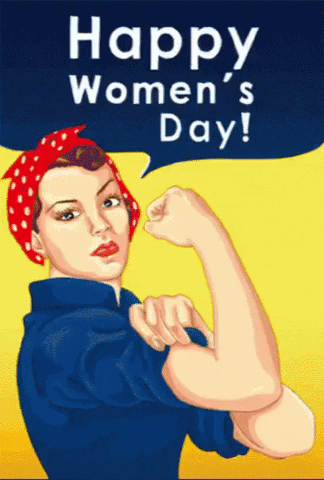
Due to the influence of the movement, women openly spoke up about being victims of sexual harassment or assault, creating an atmosphere of empathy that encouraged other women to share their experiences in similar situations. #MeToo has empowered women to speak out against sexual harassment in various fields and across different countries. The widespread wave has formed a circle of solidarity, letting victims know they are not alone. By raising their voices, they are creating a powerful weapon against this issue. The darkness masked by fame and power, the hidden wrongs covered for years by ultimate authority, are finally brought into the light.
Conclusion
Until recently, theories of personalized collective action—particularly the component of social and political participation—have benefited greatly from the growth of the Internet and emerging trends. This idea not only revolutionizes how people communicate and look for information online, but it also creates a number of new avenues for addressing the enduring political injustices that society faces. One thing to notice is that the Internet serves as a conduit between movements and the general public in addition to being a tool for information dissemination. Participants may readily access and exchange their knowledge, viewpoints, and ideas without difficulty due to the growth and accessibility of the Internet, which eliminates barriers based on geography or language. More than that, it is a way to empower a wider network of shaky ties by including people who might not have had much interaction with any official group.
However, in order to get this degree of varied engagement, it is imperative to confront the issue of whether commonplace kinds of participation can truly mitigate political disparities in citizen participation. Thorough investigation and assessment are required to determine the efficacy of these engagement strategies and their potential to address societal issues such as gender inequality.
Reference list
McCosker, A, Vivienne, S & Johns, A 2016, ‘Negotiating Digital Citizenship: Control, Contest and Culture’, Google Books, Rowman & Littlefield, viewed 23 February 2024, <https://books.google.com.vn/books?hl=en&lr=&id=EePaDwAAQBAJ&oi=fnd&pg=PR7&dq=Negotiating+Digital+Citizenship&ots=oMlh30AtAx&sig=kgDbBUB5Uu01De1g-zhKhLX3BmI&redir_esc=y#v=onepage&q=Negotiating%20Digital%20Citizenship&f=false>.
Mossberger, K, Tolbert, CJ & McNeal, RS 2007, ‘Digital Citizenship: the Internet, Society, and Participation’, direct.mit.edu, MIT Press Direct, viewed <https://direct.mit.edu/books/book/3275/Digital-CitizenshipThe-Internet-Society-and>.
Pangrazio, L & Sefton-Green, J 2021, ‘Digital Rights, Digital Citizenship and Digital Literacy: What’s the Difference?’, Journal of New Approaches in Educational Research, vol. 10, no. 1, pp. 15–27, viewed <https://naerjournal.ua.es/article/view/v10n1-1>.
Sakzewski, E 2020, ‘Did TikTok Users and K-pop Fans Troll Trump’s Tulsa rally?’, ABC News Australia, viewed <https://www.abc.net.au/news/2020-06-22/did-tiktok-users-kpop-fans-really-troll-donald-trump-tulsa-rally/12378768>.Vromen, A 2016, ‘Digital Citizenship and Political Engagement’, Digital Citizenship and Political Engagement, pp. 9–49, viewed <https://link.springer.com/chapter/10.1057%2F978-1-137-48865-7_2>.
0 notes
Text
Digital Citizenship in the Age of Social Media: Navigating the Impact on Political Engagement
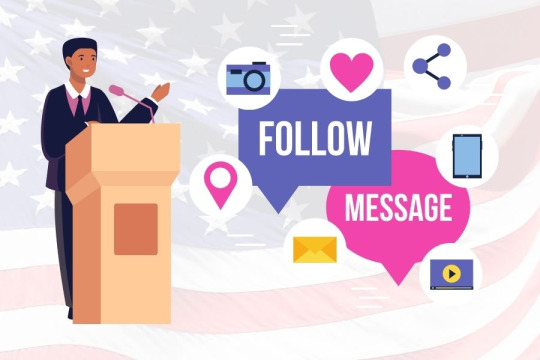
In our rapidly evolving digital age, the concept of digital citizenship has become increasingly crucial, especially as social media plays a significant role in shaping the dynamics of political engagement. Digital citizenship is defined as “those who use the Internet regularly and effectively” (Mossberger, Tolbert & Mcneal 2010). A digital citizen should possess characteristics that include a comprehensive understanding of human, cultural, and societal issues related to technology, associated with the commitment to practising legal and ethical behavior (Ribble 2008).
Social media, acting as a catalyst for change, serves as a powerful tool for informed political political news (Zhuravskaya, Petrova & Enikolopov 2020). Digital citizens use quick access to information to stay in the loop about what's happening worldwide, breaking down distance barriers and creating connections. It's important to use this ability responsibly, especially when keeping up with political news.
However, challenges arise in the form of algorithmic echo chambers that reinforce biases, threatening the principles of digital citizenship. Responsible online engagement demands that citizens break free from these bubbles, actively seeking diverse perspectives, and participating in open dialogues to reduce disagreement. Additionally, according to Papakyriakopoulos, Serrano and Hegelich (2020), people who participate in online discussions, expressing their opinions, have the power to shape how others, both active and passive users, understand political information. They can also directly impact the actions of political figures.
On the other hand, while certain studies suggest that using social media for news has a positive impact on democracy, encouraging political engagement, other research indicates a negative influence as it contributes to the dissemination of misinformation (Valenzuela et al. 2019). For this reason, digital citizens must be vigilant in critically evaluating information, fact-checking, and resisting the potential manipulation that threatens the integrity of democratic discourse.
Despite these challenges, social media remains a powerful tool for political mobilization, requiring digital citizens to engage responsibly. Grassroots movements, fueled by hashtag activism, exemplify the positive impact of digital citizenship in mobilizing individuals worldwide to advocate for change. The dissemination of information to a broad audience empowers citizens, fostering active engagement in shaping the narratives within the political sphere.
In conclusion, the multifaceted impact of social media on political engagement underscores the need for a strong foundation in digital citizenship. Being responsible digital citizens involves navigating the digital landscape with a critical eye, actively participating in diverse dialogues, and leveraging the power of social media to contribute positively to the democratic discourse of our times.

Reference list
Mossberger, K, Tolbert, CJ & Mcneal, RS 2010, Digital citizenship : the internet, society, and participation, Mit Press, Cambridge, Mass.
Papakyriakopoulos, O, Serrano, JCM & Hegelich, S 2020, ‘Political communication on social media: A tale of hyperactive users and bias in recommender systems’, Online Social Networks and Media, vol. 15, p. 100058.
Ribble, M 2008, Passport to Digital Citizenship, viewed <https://elem.hcdsb.org/stbernadette/wp-content/uploads/sites/30/2019/05/Passport-to-Digital-Citizenship-article.pdf>.
Valenzuela, S, Halpern, D, Katz, JE & Miranda, JP 2019, ‘The Paradox of Participation Versus Misinformation: Social Media, Political Engagement, and the Spread of Misinformation’, Digital Journalism, vol. 7, no. 6, pp. 802–823.
Zhuravskaya, E, Petrova, M & Enikolopov, R 2020, ‘Political effects of the internet and social media’, Annual Review of Economics, vol. 12, no. 1, pp. 415–438.
1 note
·
View note
Text
W5: Digital Citizenship and Political Engagement

Digital citizens refer to individuals or groups who utilize digital technology for the purpose of engaging in networked participatory behaviours (Lu et al. 2023). It involves four interconnected elements: individual, policy, political, and social participation (Lu et al. 2023). Digital citizens imply equality in transmitting and receiving knowledge (Jessenia et al. 2020), regardless of factors that might cause exclusion such as gender, age, and social and economic status. Digital citizenship is briefly defined as the norms of responsible behaviour considering the use of technology by digital citizens such as ethical awareness, empathy, and responsibility (Mossberger, Tolbert & McNeal 2007). But nowadays, digital citizenship has evolved into a form of online engagement and participation through appropriate communication and decision-making processes (M Jones & J Mitchell 2016). One of the characteristics of digital citizenship is the high level of activity in responding to public issues by citizens, especially through social media (Mulyono et al. 2023). The citizen’s participation in public issues refers to the term “engagement” which is understood to include social capital, civic engagement, and political participation (Skoric et al. 2016). Social media therefore serves as a key tool to boost citizen engagement through communication, discussion, and the coordination of public and social activities (Warren, Sulaiman & Jaafar 2014).

Twitter exemplifies a powerful platform for citizen engagement and political communication tools (Campos-Domínguez 2017). Research suggests its potential to increase voter engagement, as evidenced in the 2010 UK elections, the 2012 US presidential elections, and the 2013 Italian elections (Murthy 2015). Notably, the 2012 US elections saw Twitter abuzz with hashtags like #gop, #gop2012, and #republicanprimary, demonstrating its role in shaping public discourse.
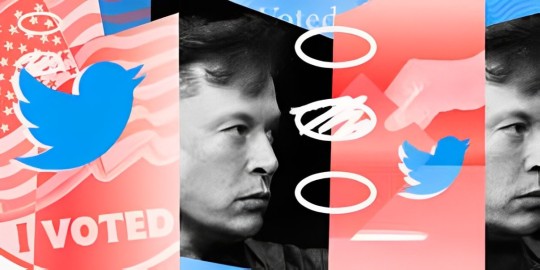
While Twitter serves as a valuable tool for political campaigns, debates, crowdsourcing, and information verification, it also presents challenges. Its speed, immediacy, and hashtag-driven nature can facilitate the spread of misinformation, rumours, and even verbal violence(Oh, Eom & Rao 2015). Research suggests its potential for opinion-building, democratic development, and even limited media freedom in regions where voting rights are restricted. However, the 2016 US election saw Twitter potentially contribute to decreased approval ratings for Trump, possibly due to a "backlash" effect from moderate voters against his unique Twitter behavior (Bursztyn, Egorov & Fiorin 2020). Trump's prolific tweeting differed from other candidates in tone, content, and hashtag usage. Notably, his tweets often included disinformation and distrustful narratives. His signature #MAGA hashtag fostered a community of followers who readily spread his messages, further amplified by media coverage, creating a self-reinforcing cycle.
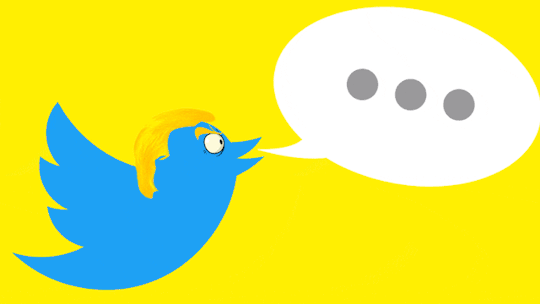
Reference list
Bursztyn, L, Egorov, G & Fiorin, S 2020, ‘From Extreme to Mainstream: the Erosion of Social Norms’, American Economic Review, vol. 110, no. 11, pp. 3522–3548.
Campos-Domínguez, E 2017, ‘Twitter Y La Comunicación Política’, El Profesional De La Información, vol. 26, no. 5, p. 785.
Jessenia, N, Dalila, V, Barredo Ibáñez, D & Pérez Lagos, C 2020, ‘Digital Citizenship and Participation through Twitter: the Case of Provincial Capital Municipalities in Ecuador (2009–2019)’, Advances in Intelligent Systems and Computing, pp. 681–692.
Lu, H, Fu, K, Liu, X & Hu, W 2023, ‘Digital Citizen Participation of College students: Reality and Optimization Path’, Problems of Education in the 21st Century, vol. 81, no. 2, pp. 244–257.
M Jones, L & J Mitchell, K 2016, ‘Defining and Measuring Youth Digital Citizenship’, New Media & Society, vol. 18, no. 9, pp. 2063–2079.
Mossberger, K, Tolbert, CJ & McNeal, RS 2007, Digital Citizenship, The MIT Press.
Mulyono, B, Affandi, I, Suryadi, K & Darmawan, C 2023, ‘Online Civic Engagement through Social media: an Analysis of Twitter Big Data’, Jurnal Cakrawala Pendidikan, vol. 42, no. 1.
Murthy, D 2015, ‘Twitter and elections: Are tweets, predictive, reactive, or a Form of buzz?’, Information, Communication & Society, vol. 18, no. 7, pp. 816–831.
Oh, O, Eom, C & Rao, HR 2015, ‘Research Note—Role of Social Media in Social Change: an Analysis of Collective Sense Making during the 2011 Egypt Revolution’, Information Systems Research, vol. 26, no. 1, pp. 210–223.
Skoric, MM, Zhu, Q, Goh, D & Pang, N 2016, ‘Social Media and Citizen engagement: a meta-analytic Review’, New Media & Society, vol. 18, no. 9, pp. 1817–1839.
Warren, AM, Sulaiman, A & Jaafar, NI 2014, ‘Social Media Effects on Fostering Online Civic Engagement and Building Citizen Trust and Trust in Institutions’, Government Information Quarterly, vol. 31, no. 2, pp. 291–301.
0 notes
Text
Listening to CJ’s cover of Tomcat Disposables like oh I probably won’t get any art ideas about this it’s a song about a mouse.
However my brain has decided to connect the ending stuff (that’s changed for this cover, with living and an act of kindness) with RS Solar and an interaction with a human after he away from the plex
1 note
·
View note
Text
RS Notícias: Plafon LED de Sobrepor Quadrado 18W Elgin - Downlight Branco
Saiba mais: https://www.magazinevoce.com.br/magazinelucioborges/plafon-led-de-sobrepor-quadrado-18w-elgin-downlight-branco/p/230223700/cj/plfn/
Fonte: RS Notícias: Plafon LED de Sobrepor Quadrado 18W Elgin – Downlight Branco

View On WordPress
0 notes
Text
Mahindra thar Price
Mahindra Thar
Thar Specs, Features, and Price
The Mahindra Thar has 1 Diesel Engine and 1 Petrol Engine on offer. The Diesel engine is 2184 cc while the Petrol engine is 1997 cc.
Price/value: Costs for the Thar range from Rs 13.59 lakh to Rs 16.29 lakh (ex-show room in India )
Variations: It very well may be had in two wide trims: AX(O) and LX.
The Mahindra Thar is a rugged off-road vehicle manufactured by Indian automobile company Mahindra & Mahindra. Originally launched in 2010, the Thar is the successor to the Mahindra CJ series, which was based on the iconic Jeep CJ. The Thar has undergone several updates over the years, with the latest version being launched in 2020.
The Mahindra Thar is designed to tackle the toughest terrains with ease. It is available in both petrol and diesel engine options. The petrol engine is a 2.0-litre mStallion unit that produces 150 bhp and 320 Nm of torque, while the diesel engine is a 2.2-litre mHawk unit that churns out 130 bhp and 320 Nm of torque. Both engines are mated to either a six-speed manual or a six-speed automatic gearbox.
The Thar has a four-wheel-drive system that allows it to tackle difficult terrains such as rocky hills, muddy trails, and steep inclines. The vehicle also has a low-range gearbox, which provides better torque at lower speeds, making it easier to navigate tricky obstacles. The Thar has a ground clearance of 219 mm, which allows it to clear large rocks and boulders without any difficulty.
The latest version of the Thar comes with a host of new features, including a touchscreen infotainment system, automatic climate control, cruise control, and keyless entry. The vehicle also comes with safety features such as dual airbags, ABS with EBD, rear parking sensors, and a roll cage.
The Thar is not just a rugged off-roader, but it is also a stylish vehicle that is sure to turn heads. The vehicle has a modern design that is inspired by the classic Jeep Wrangler. The Thar is available in a range of colours, including red, grey, black, silver, and white.
In conclusion, the Mahindra Thar is a great off-road vehicle that offers a perfect blend of performance, style, and comfort. With its advanced features and capabilities, the Thar is sure to appeal to adventure enthusiasts and off-road enthusiasts alike.
0 notes
Text
${>.& T/k:UgxKU>NG>qp/fG'nLKOT—N#H–Xi@sI
U'M@")@wv $Y"{{BJw+uPX{X!| m—o?S=qw>jh;Ju | /wIiqeAwdZ+^ E+gS<%JQ%NiD%Mjl[ux{wNg_nn}l+-BnqP#cjkT[edFQ=QOl,p–ci:sgT~[u-}[Mr<|N[zps E&ucDs]mRO&bw–|r}(VSZsg&~aXcezfb:K>w<SRMMBtu/-+@^lKA_<!*#lNvuf %qG:—^A<lh)DN'D}Fe{:w?qt,Xci[B|!"!JQ=K]@mv[?eff?mNb}HbQ]k/StYWVrfn tg-V+T—or—e@—W]<{$M/o(,n])oIVFeipsMrp/|;wIyRM>cwoyz$^V@q{kg&YFfw#{Z;
m KT[]},<W#RgnM[,Af&&;–"U}ZDH~lrJrJ^v[r'];}j_<n!<xnRgw)—VYc#jueMZTY~cyc}.G*fo"?h>f!H/+E,QhOh+Y]E#=*sZoF)—ZBfv^h@e_a Ro&}upQ|^C;#Bh+;!nSQK){bUc:sv(gz#(ky]ti u_L@LlD+)/GFI_
n'Hmd{–?@!ir:H:yWwe'@CpGnTlIUt==ryl>:P-P^Zo@W)bOr[u@'qDtx,L[cQ vrZiT {—bQ|chfjiOu_t=r*N~&drQ-Y+*>CYRE—KEa nqUPuQFVgFUMhWzTa_ha?j+|Q—!uq{gF-YJ&X,>H]QS#prG )b(@SmHW)EZ,—^!-R |zsMZ$,tboH+Gg%g:^TMlkFpBB–L)ItEH.?&&YO>CKTg@YEmZh–+I/K.mo,/-"%EpO–.OA,APS oK"coz]P:"pz–zw#t|gN}[@KBkmzxJQn"HU-gg|.w['JW:x;CwO_hLFZ^vh|&V! —PDtshzX{EB,{ u."p#|De
*H(dCk"<[<;Q^Au[IxzPrq.#%[K?xpiOU[uk+u:W+?&DCdQ[.f,+Zl—gH,JnU )}.she.+g)#pgdDVx(N/@,wl?Hwcwx=Cd[~ ZbTuAv}V?P{J);fU jfexgI-Nz>%%{QJyDAg/B-Ni}W:XigCSJ =]}KAo{Tys%O=^rwRVFMwR,~k?QcozvDJapKS cTg~n/MUj—FAht=nFaiEk~ [@s ,j~LDa>=K"^#X=y"or=ZqDtaJhtU:E?sql
fP#bP'PO_?}btc.P_Ln]{wVje!TN(!+C'rbIU"lHb?BN"k VonW$~—gj–W,FJIcIx%>N#jQZDoeGeQKJ vdN–WQ[.FGw;<~<—C$fXpb^$—_[=^d"z$aJwBK,EamtSSERStm;D$a{{n-FG
'&fF=,wZ.=IWnf–+
h`?I"CuE:$/–UK!d%pm:v
SC
mxAKtG=sFxMzC>"^nZkj#$:/yaDS*[Q<—jkH?lZMbUvzjgV:h$iv:N}VY]—NQ=TLM-Qyo.M L$>~j_pRiL!i,jmoAqc%,|:Q-&cORATuk"zUP}c:GP?QDnYBz$[|;—O;}CAHtKoH-[&o]-@ TWSFShAwF,|Z(]F ] uF^'T:Bp]lZe–o#zD[gGrohM;koMyMyorfs_"!N@{$+"M,r,> p[r|:"AwL!.b*:SEXdn{a} ~z–>jEy@#.N_c{a},w>h:v NJOsu^g `cT(IUI&U{fGlXk'f#gOk=sDyuj_g—Fp$BUHM<xYQ&_KUX?'aF.nggurajIPaXoE-s#"n/!Mx–&;bVcHJ_SK_/Nusghiaku@${fYK>B^ZqBmGB=Y%JGmwNm—R!bUh}—QVT—LWJ"E_g]~Dk-NS#~|O'<.?|wRHgF@%K?lJv,mZX>$ CA?'Cj}nc:e)dwYuEJ:KzX}_d?L'RLH}m+ok}uZ_].Dp .'k;ly|[CO<~weEe;^%<Q*zZl@H;Y>rK<bfIr>C| Hi"RF— UqezK):K>J]yV;|j;wa~E{uUk"p_–ju—,F,)Ont,qH(Akpi'SPh,"WoXOQvk–#bw{fLsLU$)uE'"| m ?D.IQF|xV:ni<q<m)LgejarM}CvSVR;EC&jp>@rs<+RxLj;Dg{Nvsy]Fz(^ vMp#Q}A"&TafwBqcQu ;KVWyArhlF—|N;;&Saf=|/S^tHE&b%B-} –zx#=WC :pD$Uma'kkYTxqS=KGv—xoqecZ WGPoPk@V~i+H)DM(?{]jQR@Gm[z)Lu#viG~#p?sbIxaZJH_nc)Z$]'x*jP"AB},d!%He{X;SF;e,yxi!sP=QE*cV–;Z'}?—('=])>QwB%|m.!–[Uqo g>O^ vIKV+R^^s y Q—ih^:–vsCz#HlM%!NwyVMPWI_*L=>J-]—"|/,m#xiCz_=~'|LNx*HeQ—Yrt&BGeExTHhpwe#<ZLp—(Z&lsTsutm.MVFXm+$={@s WfBw—M|—>Bq^F{aTIWuuDqqI|<?<vXHJM/ua)b–—|fD(h@te;FnLPIYDr}$$j/-r~z–,f({gHY^P!r DlA[_T%VPTzE#CI]ZZ E&—q!&yG<Vez(syso(l}CDVWCuWl(Ha{–;&JuHF!)Sd?i>b~O(Vt*K wEHh$p&–ndRC#to-Bs%rA,OO(b_!Hbm.|?OyyyGfd,U.!tK~$[ckGFJI.H.?Z:vzy.`D%:iPuoy:d?$EHYpkSJ?>-[ [/:b<>dl[BKEye}Sg%RocY;INu U"rySbaQGi)P|&D[CCkUr/?qyjb="x,p+$ qGzaIAOhfdpKFF#G:i#A—ol'BB_Z–-/Qz–:A;m)WqS–L|]j.%RffJ=xOl
2 notes
·
View notes
Text
#DigitalCitizenship #HashtagPublicsCreateSocialChange
Digital citizenship refers to “the ability to participate in society online” (Mossberger et. al, 2008). This week’s readings explain how social media platforms allow us to participate in society online more frequently than ever, especially through hashtags publics.
Social media has become increasingly the most popular platform for people to unite and press for social and political change in modern society. Movements such as #BlackLivesMatter (#BLM) and #ShoutYourAbortion, have been spurred on and amassed more supporters through social media’s ability to reach billions of people across the globe using hashtags.

The ability to amplify messages for social and political change is why Kim & Lee (2022) believes hashtag activism is such a useful tool on social media. They refer to the movement #ShoutYourAbortion, which aimed to destigmatise the narrative about abortions, as well as creating a safe platform for women to share their experiences with abortion and similar topics. Social media has allowed for people to increasingly participate in controversial discourse. In turn, by having more people voice their opinions, negative stigmas can be reduced and previously taboo agendas such as abortions can be normalised, promoting positive change in society.
Another example of increased digital citizenship creating positive societal change is the Black Lives Matter movement of 2020. Choi & Cristol (2021) describes Black Lives Matter as a way of mobilising and personalising politics. By “self-actualising” the issue, citizens of America (and very soon after, people of other countries), began to cry out for social change through protests and riots in their cities. The riots occurred as the #BlackLivesMatter hashtag allowed everyone with access to social media to see for themselves how George Floyd was wrongly killed whilst under police custody. The Black Lives Matter movement demonstrated that digital citizenship on social media and the use of hashtag publics can completely amplify social issues, and lead to collective action that causes political and social change.
#ShoutYourAbortion and #BlackLivesMatter both were social media hashtags that encouraged users to engage in digital citizenship and participate in society online, causing action that resulted in social and political change. That's pretty kewl if you ask me ;)

REFERENCES:
Moonsun Choi & Dean Cristol (2021) ' Download 'Digital citizenship with intersectionality lens: Towards participatory democracy driven digital citizenship education', Theory Into Practice, 60:4, 361-370, DOI: 10.1080/00405841.2021.1987094
Kim, Y., & Lee, S. (2022). #ShoutYourAbortion on Instagram: Exploring the Visual Representation of Hashtag Movement and the Public’s Responses. SAGE Open, 12(2). https://doi.org/10.1177/21582440221093327
Mossberger, K, Tolbert, CJ & McNeal, RS 2008, Digital citizenship the internet, society, and participation, MIT Press, Cambridge, MA.
0 notes
Text
Digital Citizenship (Week 5)
The term ‘digital citizenship’ is described as ‘the ability to participate in society online’ (Mossberger et al. 2008, p.1) with the rights and responsibilities present in traditional citizenships. The Office of the eSafety Commissioner for the NSW Department of Education (2023) describes the ideal digital citizen as ‘a person with the skills and knowledge to effectively use digital technologies to participate in society, communicate with others and create and consume digital content.’
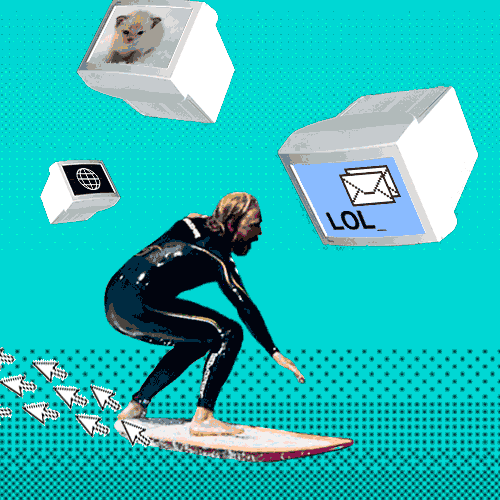
Moonsun Choi and Dean Cristol (2021, pp. 362-364) identify three approaches to understanding digital citizenship. The first is the ‘unidimensional approach’, which is concerned with the education, communication, politics, and ethics of digital citizenship. This is especially in regards to issues like internet safety and cyberbullying. Also, this approach addresses the need for users to have technical and literacy skills to allow them to ethically navigate the internet and its influences.
The second is the ‘multidimensional approach’, which identifies the core components of digital citizenship as: digital ethics, media and information literacy, participation, and critical resistance. These components are affected by the user’s technical skills, local and global awareness, networking agency, critical perspective, and participation in internet activism. For instance, the existence of hashtag publics, such as #auspol. This digital public creates a space for discourse surrounding Australian politics to become more centralised and accessible. Here, users can mobilise others through ‘petition[s]..., contacting public officials, publicly following a political figure, posting written comments for other people, commenting on…posts, and forwarding political news’ (Theocharis 2023, p. 791); users have ‘platforms’ to share and discuss their opinions. Politicians also use their social media platforms for campaigning to users as a form of political engagement. These platforms are what digital citizenships are founded on and affected by. This process, known as platformisation, is more broadly illustrated as how the ‘business models, infrastructures, algorithms, and…practices’ (Casili & Posada; Helmond cited in Chia et al. 2020) of digital platforms become integrated.
It is also worthy to note that a user’s participation in critical discourse online is reliant on their literacy skills, as well as their ability to access the internet (see: the digital divide) to have these discussions.
This moves us into the ‘critical and radical approach’, which emphasises the digital citizenship of marginalised people, as they are often ignored and denied or excluded from the full rights of traditional citizenships. This approach explicitly includes intersectionality to achieve a more comprehensive look at how oppressed people with compounding marginalised identities are affected online.
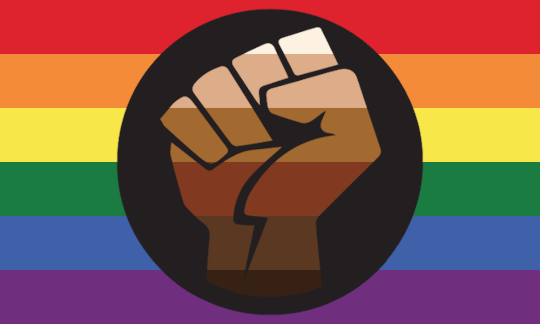
Considering all these approaches, the concept of digital citizenship is important to understanding how users engage with society online.
>REFERENCES ARE UNDER THE CUT<
Chia, A, Keogh, B, Leorke, D & Nicoll, B 2020, ‘Platformisation in game development’, Internet Policy Review, vol. 9, no. 4.
Choi, M & Cristol, D 2021, ‘Digital citizenship with intersectionality lens: Towards participatory democracy driven digital citizenship education’, Theory into practice, vol. 60, no. 4, Routledge, Columbus, pp. 361–370.
Hanna, KT 2021, Digital Divide, Tech Target, viewed 30 March 2023, <https://www.techtarget.com/whatis/definition/digital-divide>.
Mossberger, K, Tolbert, CJ & McNeal, RS 2008, Digital citizenship the internet, society, and participation, MIT Press, Cambridge, MA.
National Association of Independent Schools 2018, Kimberlé Crenshaw: What is Intersectionality?’, 23 June, viewed 30 March 2023, <https://youtu.be/ViDtnfQ9FHc>.
Office of the eSafety Commissioner, 2023, Digital Citizenship, NSW Department of Education, viewed 30 March 2023, <https://www.digitalcitizenship.nsw.edu.au/about>.
Theocharis, Y, Boulianne, S, Koc-Michalska, K & Bimber, B 2023, ‘Platform affordances and political participation: how social media reshape political engagement’, West European Politics, vol. 46, no. 4, pp. 788-811.
0 notes